So, You Want To Know What Is Acne?
Let me Explain what acne is
Acne (Acne Vulgaris) is a skin condition that affects the back. neck, upper arms, chest and face and is very common in teenagers however does affect adults in there 30-40s. Acne is the term for clogged pores, whiteheads, pimples, blackheads and even deeper lumps called cysts. Acne has many causes, many myths and plenty of different treatments. Scientists still do not completely understand acne and why people develop it but we do know that genetics play a big role. E.g Parents and grandparents.
Looking at a our skins surface very closely under a microscope, we can see thousands upon thousands of tiny openings called pores. The average adult will have roughly 5 million pores of his or her body and every pore has a hair follicle which is basically looks like a hair sticking out of your skin. Pores are holes in your skin, not scars but openings to hair follicles and are vital for the skin and body to function.

Underneath your skin you have a base of a hair follicle and sebaceous glands which are connected to the hair follicle. The sebaceous gland constantly is releasing an oil called sebum, which is used to protect, keep the skin from drying out and soften the hair follicles. The Sebum(oil) rises up the hair follicle to the top of the skin and onto the surface and in this process it takes dead skin cells and bacteria with it. Acne occurs when there is excess oil or dead skin cells which then get clogged and trap bacteria underneath the skin. The Sebum can act like a glue when combined with the dead skin cell therefore creating a ‘soft plug’. The sebaceous gland continues to produce more and more sebum which causes the pore to grow in size like a balloon. This is the first stage of a white head, blackhead, white head or even cyst in severe cases.
Sebum has tanning chemical in it called melanin which actually makes your skin the colour it is.
Bacteria
Bacteria lives everywhere, you name it and there is bacteria. Even the desert has bacteria living there and so does the surface of your skin. Bacteria lives on the face and can work it’s way into a clogged pore to flourish inside creating inflammation. You may be asking yourself why acne starts? Before puberty the oil glands make very little oil so even if a hair follicle/ pore gets blocked, it does not have enough pressure to become anything more.
When children hit puberty or in their teenage years, they experience hormonal changes as they grow and these hormonal changes lead to excess oil build up in acne areas. The hormones react and tell the skin to produce more sebum (oil) from the sebaceous glands. The excess oil combines with the dead skin cells helps trap bacteria and skin cells under the skin which results in acne. Pregnaunt woman can get acne when experiencing menopause and hormonal changes. Excess oil and dead skin cells can be the main problem when it comes to acne and there are many ways of treating acne.
An Inflamed Pimple looks like the picture to the right.
Green is the sebaceous glands, black hair follicle down the middle and the blocked sebum building up in size is yellow. The sebaceous glands are continuing to produce sebum and the excess oil and dead skin cells are stuck together and blocking the exit (grey top). The Red shows the inflammation of the surface of the skin.
Whats happening here is sebum, dead skin cells and bacteria became trapped underneath the skin. The bacteria has begun to flourish and grown in numbers along with the sebaceous glands adding more sebum. The immune system responds to the bacteria and this leads to white blood cells rushing in to take action and remove the bacteria resulting in a inflammatory red lump and a white head in the centre. However this is not called a white head it is called a pustule. Whiteheads are the first stage of acne when it is not inflamed or has bacteria to become a problem. Whiteheads are not always painful but do not pick or squeeze.
What Is An Acne Breakout?
This is a common term for an area of any of the below which could be inflamed sore or visible. This is called and Acne Breakout or commonly know as “break out” suggesting that the signs of acne have appeared visible on the surface of the skin. A common example of a Acne Breakout is when skin is normal and clear and then within 1-2 days skin has shown a noticeable change in an area showing inflammation, rednes and pustules(pimple). These can be very annoying for acne sufferers and seem uncontrollable however eating the acne killer foods can help with acne breakouts. The different types are below.
There are different types of acne that respond to different types of treatment. These types of acne are:
- Blackheads
- White Heads
- Pustules
- Cysts
- There are more
White Heads
A normal follicle looks like the one left (pictured) and as I said earlier, sebum routinely drains to the surface of the skin. A white head is formed when the oils and dead skin cells get trapped just under the surface and the sebum cannot escape. This results in a white head that looks raised and white. This is called a closed comedone because it only has a thin minute route to the surface of the skin and cannot escape or the melanin cannot oxidise.
White heads are normally white looking lump or shin coloured lump which are not inflamed just visible on the surface of the skin. Squeezing, scratching or attempting to pop them will result in them turning in to pustules or cysts. White heads have pus inside them and but not inflamed.
Blackheads

Blackheads are different to whiteheads in terms of colour, size and looks however the process of a blackhead forming is similar to a white head.
A blackhead is formed when the oils and dead skin cells get trapped under the skin just like a white head but the pore partially opens to the surface and the sebum oxidises due to the melanin(tanning chemical) the in the sebum and turns a dark black or brown due to air. Blackheads commonly get mistaken for dirt trapped under the skin however it is the melanin (chemical that tans when oxides due to air at the top clogging the pore. The top is not hard, its like a soft glue plug that has turned brown.

Pustules
Pustules are what we know as zits, pimples and spots. Pustules are whiteheads blackheads or other types which have either been touched, squeezed or in severe acne just form due to way to much oil dead skin cells trying to escape. Pustules happen when an under the skin whitehead for example, becomes in flamed due to the wall bursting on either side. The can be caused by pushing down (Like the Picture) on the area. When the wall bursts, inflammation occurs causing a red, mark or lump that is visible on the surface of the skin.
Bacteria that are trapped in the pour or on the surface of the skin begin to multiply and grow in side. The bacteria has an enemy which our bodyuses to fight infection and I am sure you have heard of them. The White blood cells. These cells rush in to fight the bacteria and that leaves you with a red Pimple with a white head.
Popping these is not advised however the skin will naturally push the contents out eventually just make sure your ready to catch them with a tissue.
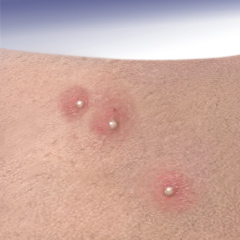
Cysts
Cysts start, smooth to touch and filled with either liquid or puss and go deep down under the skin. However if a cyst gets infected with bacteria it will increase in size more than a pustule. Cysts are normally under the skin and can be quite painful with acne. This is because the build up of oil is far more and this can actually burst the pore walls causing more inflammation around the pore and the skin surface. Cysts are not as common as white heads or blackheads however they do still occur to people who produce more sebum than others.
If you look at the picture to the left you can see that the pore wall on the right side has burst due to pressure of expansion. This is can be caused by putting pressure down on the blocked pore, by pressure of hand, leaning or squeezing.
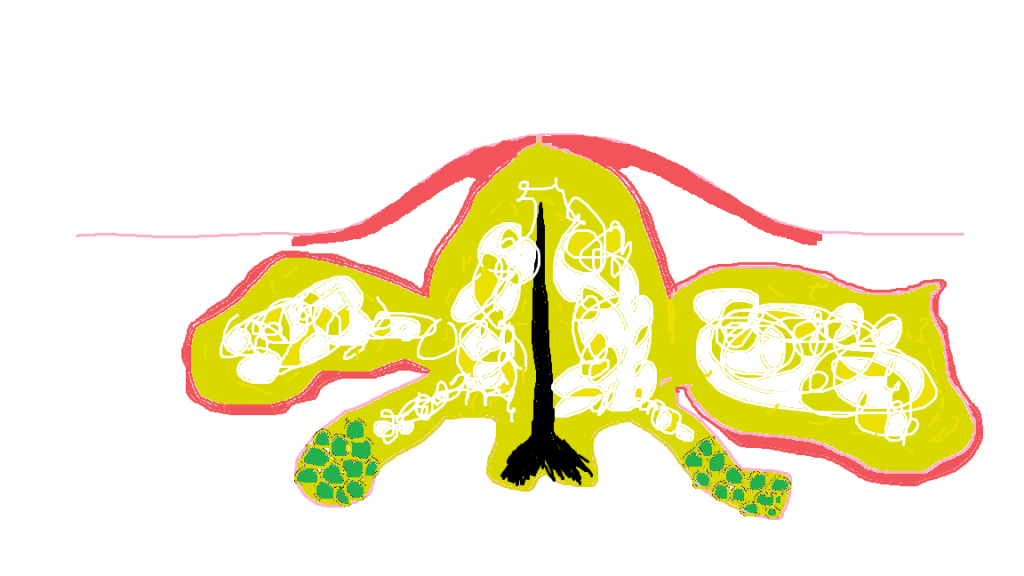
The term for cysts are Larger deeper pus filled lumps that go deep beneath the skin. Cysts walls have normally bust however they remain underneath the skin and can be larger. They can be filled with just liquid however they normally have pus and a lot of it. Due to white blood cells, bacteria, dead skin cells and oil.
As you can see they can be huge and chaotic and very uncomfortable.
Click Here For Treatment and Side Effects
Or Here For Products Reviews That Work
Hope this Helped And Explain What Acne Is.

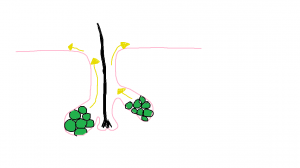
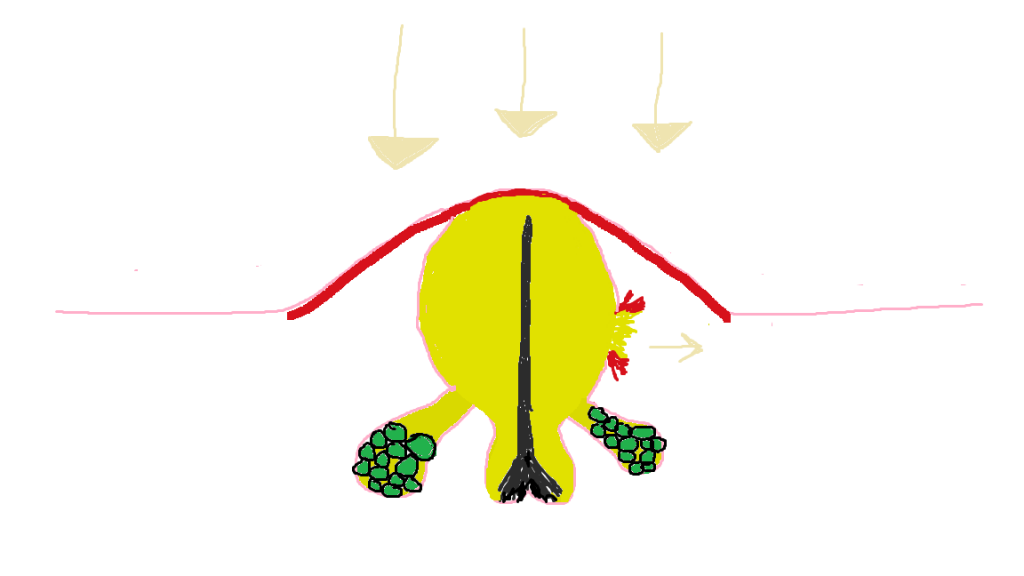
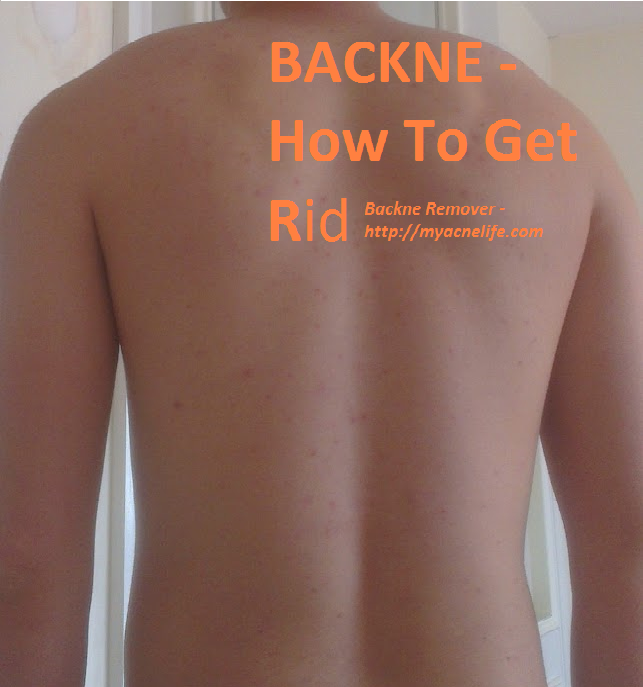

Pingback: How To Prevent Acne FreeAcne Clinic | Acne Clinic
Pingback: Old Trick To Prevent Acne.Acne Clinic | Acne Clinic
Pingback: Aloe Vera Gel Acne ScarsAcne Clinic | Acne Clinic
I used to get Pustules and blackheads all the time but not so much anymore however I am currently getting some pustules returning so I will avoid touching and putting pressure on them like you said and see if it helps my skin. I really enjoyed the diagrams to describe how these happen and acctually helped thank you.
Thanks Again For Acne Clinic
Hello Natalie
I’m pleased to help you out and hope you get rid of those pustules soon, There are plenty of pages and post to help with those if you interested. Thanks for the comment
Acne Clinic
Myacnelife.com
Pingback: Benefits Of Tea Tree Oil For Spots, Skin And Acne. (Should You Really Use Tea Tree Oil Spots)Acne Clinic | Acne Clinic
Thanks it was very clear! +1
Much Appreciated
Thanks !!
I am suffering with the problem of scalp acne…nature of acne are similar to pustules type as explained above.. Dermatologist suggests antibiotics for it always… But I blv overdose of Ab is also not good. I can’t use any hair oil as it makes the condition more worse. I m worried as this is leading to hair thining and fall. Please advice what treatment should be followed. Thanks in advance… I never saw such detailed explanation… Even a non medical laymen can understand this…. Thanks for sharing
This is a fun way to learn about acne 😀 I’ll just book mark this site.